(583 products available)









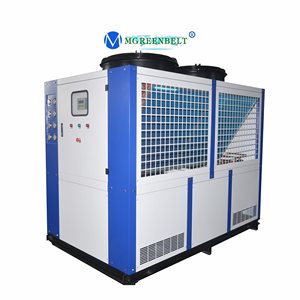






















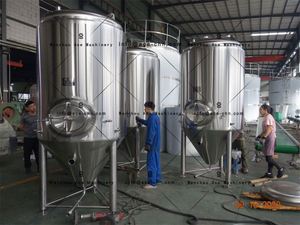
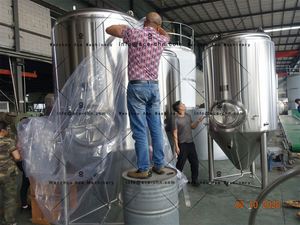








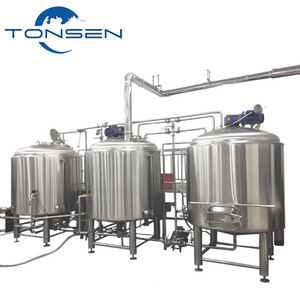

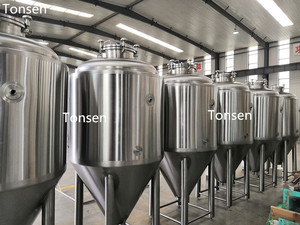




















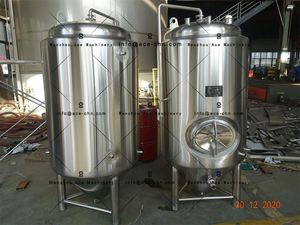

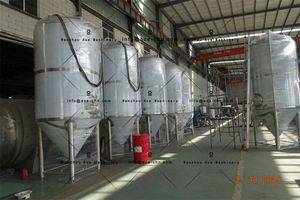




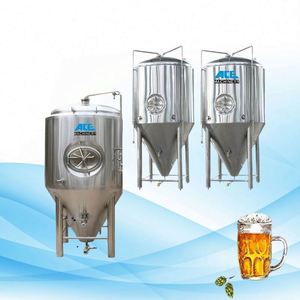





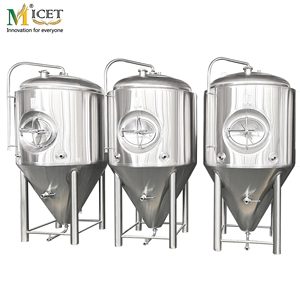





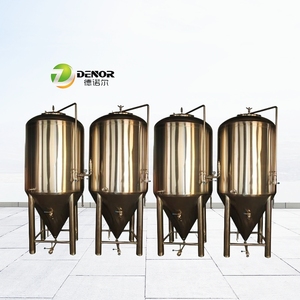


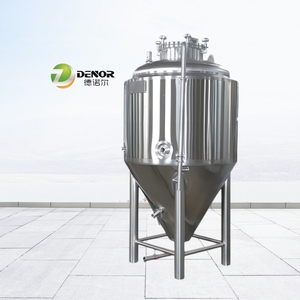











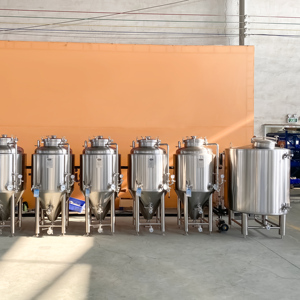


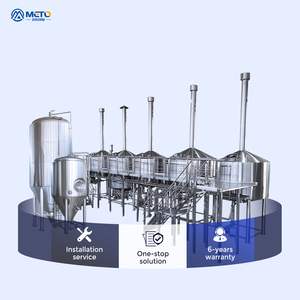



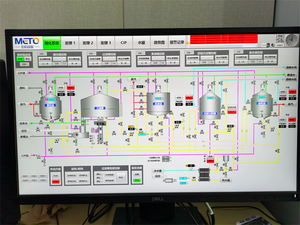






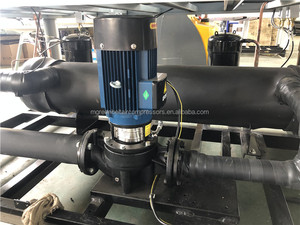
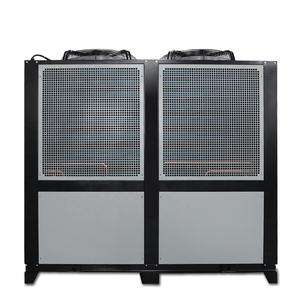









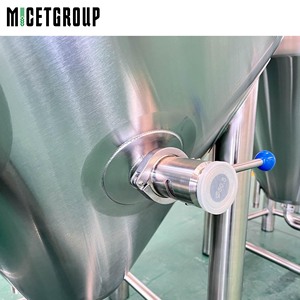





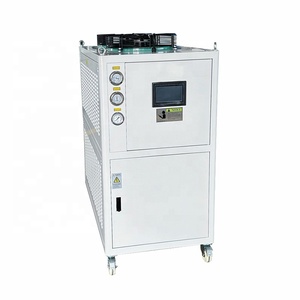













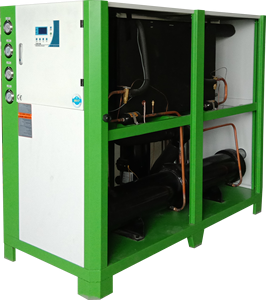


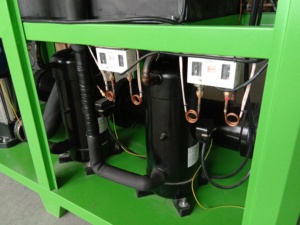









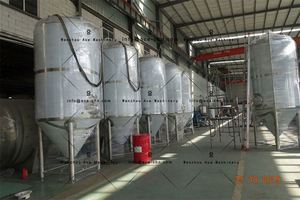

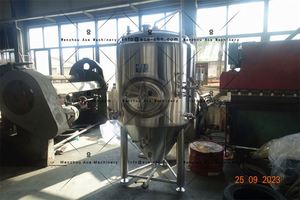






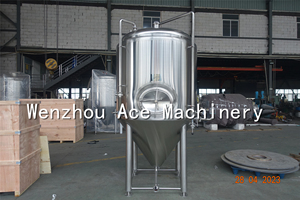
























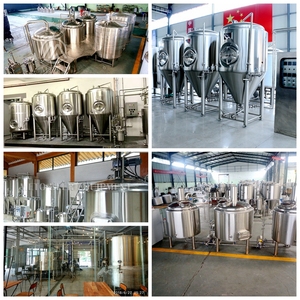















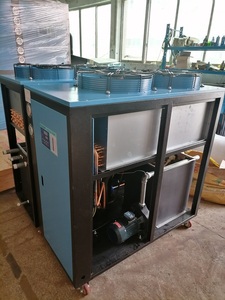


Chillers using glycol jackets are important in many industries. They help cool materials that need low temperatures. These machines use a liquid mix (glycol) to cool things, and they come in different types.
These chillers use air to cool the glycol liquid inside them. They are good for small to medium tasks. No extra cooling parts are needed. This saves money on installation. However, they do not cool as well as other types.
These chillers use water instead of air to cool the glycol. They cool better than air-cooled models. Good for processes that need very low temperatures. But they cost more to install and operate since they need a water source. They also take up more space.
These chillers use metal tubes to cool the glycol. They can handle very high cooling needs. They are tough and last a long time. However, they are heavy and complex to install. Maintenance can also be costly.
These chillers use screws to compress and cool the glycol. They are efficient and consume less energy. They are great for continuous cooling use. However, they can be pricey and complex to maintain. Good only for large jobs.
These are some of the primary industrial uses:
Chillers are used to cool foods, drinks, and other items. They help keep everything at the right temperature. They also make things freeze faster. Many meats, cheeses, and beverages are processed using chillers.
The pharmaceutical sector also uses chillers for its cooling needs. They help make medicines and other drugs by controlling temperatures. The chillers maintain the correct heat levels during chemical reactions. They also help keep the final products cool and safe.
Chillers help cool plastic pieces during their production. They keep the plastic machines at the right temperature. This helps the plastic products form evenly without getting damaged. The consistent cooling from chillers leads to better quality plastics.
The chemical processing industry relies on chillers to manage heat. Many chemical reactions produce a lot of heat, but chillers can absorb this heat through a heat exchanger, keeping the process safe. Chemical companies depend on chillers to ensure their reactions proceed smoothly without overheating.
Electronics manufacturing generates heat during its production processes. These jacketed chillers cool the systems to prevent overheating. They maintain the right temperatures for smooth electronic device assembly and testing. The consistent cooling improves the chillers' performance and lifespan.
Cooling capacity
The amount of cooling air or fluid a chiller can do is called its capacity. Most chillers for industry can cool from 5 to 500 tons of air or fluid. Larger models can cool even more. This capacity must match the needs of the user.
Temperature range
The chillers can cool fluids to temperatures between 20 and 50 °F. This range works for most cooling jobs. Some special chillers can go outside of this range.
Heat transfer fluid
Water is commonly used as a heat transfer fluid. However, glycol solutions work better in many scenarios. Glycol is added to water to make a mixture. This mixture can go as low as -30 °F without freezing. It also helps prevent rust inside the pipes.
Pump power
Glycol chillers use pumps to circulate the liquid. These pumps usually require between 1 and 10 horsepower to operate. Larger pumps move more liquid through the system. This is necessary for bigger industrial tasks. The pump power must also be efficient to reduce energy costs.
The chiller should be installed on a solid, level base. This prevents shaking and helps keep it steady. The base should also be strong enough to hold the chiller's weight.
Next, attach the pipes that bring the glycol mixture to and from the chiller. These pipes should be as short and straight as possible. This makes it easier for the pump to move the mixture around. Use clamps to secure the pipes where they curve or change direction.
Once the lines are set, connect the chiller to an electrical source. This power will run the fan and pump. Double-check that the wiring matches the chiller's needs. It is important to ensure safety before moving forward with the installation.
Pour the glycol solution into the chiller. It is essential to create the mixture first by combining water and glycol in a separate container. Then, slowly pour the mixture into the chiller through the opening at the top.
Set the controls
The last part of the installation is setting the temperature and fan speed. These controls let the chiller make the area as cool as desired. Once everything is set, the chiller will be ready to use.
The coolant fluid inside needs to be changed sometimes. The fluid can accumulate dirt and other materials over time. It is recommended to drain it from the chiller and clean the inside at least once a year. New fluid should then be added.
Check for leaks
The pipes that carry the fluid should also be checked often. Any holes or cracks in the pipes can cause leaks. Rust might also form on the outside of the pipes. Look for any signs of leaks or old damage. Fix any broken parts before they become a larger issue.
Inspect the pump
Chillers have pumps that move the fluid around. The pump helps to keep the chiller working well. Dust and dirt can make it harder for the pump to move the fluid. This can lead to overheating. Cleaning the pump every few months will help it last longer.
Clean the condenser
The condenser helps release heat from the fluid. Dust might collect on its fins over time, blocking airflow. This makes the chiller less effective. It is recommended to wash or use a vacuum on the condenser once a month. This helps it work at its best.
Listen for strange sounds
Some pumps and fans create noises when they run. If the pump or fan starts making louder or different sounds, that could mean something is wrong. Regularly paying attention to sounds can help catch issues early.
Reliable components
Parts that hold up over time are important. This includes fans, pumps, and compressors. These pieces should be tough and able to handle heavy use. Well-known brands make parts that last longer. They should be considered for quality.
Testing for performance
Before being sold, chillers should be tested to make sure they work as expected. The tests should confirm they cool liquids well. They should also ensure they use energy efficiently. Both things can save money in the long run.
Maintenance made easy
Chillers should allow workers to do maintenance tasks easily. Things like changing filters or cleaning parts should be simple to do. The easier it is to maintain, the less downtime will occur when repairs are needed.
Protective features
Shoes should have guards to protect feet from heavy items that may fall. Items that are dropped can cause bad injuries. A strong safety guard can prevent these injuries. Shoes need to have guards to protect against sharp tools that could cut or slice as well. Again, this would prevent bad injuries.
Drain plug
Chilllers use a lot of water and air. The drain plug allows all this to easily get out. Without it, thousands could get stuck in one spot. This would be dangerous and hard to move. Shoes should also have air vents. This keeps air flowing so feet do not overheat. If they do, it could cause pain or get injured. The vents help keep everything cool.
Covers and shields
Chillers also have a lot of spinning pieces. These can get stuck in them, causing harm. Covers and shields block the spinning items so nothing gets pulled in. Safety guards help control workers from getting trapped. This would keep workers safe.
Emergency controls
Chillers have emergency controls that immediately turn everything off. This helps if something goes very wrong. Emergency control stops all activity to prevent injuries. Emergency stop buttons are easy to find.
A1. Chill water temperatures between 40 to 60 degrees Fahrenheit are usually the most efficient. This range allows for effective heat absorption without excessive energy consumption. Within this range, chillers can operate at optimal efficiency levels, reducing energy costs while still providing effective cooling.
A2. While glycol is commonly used for glycol-chilled water applications, other liquids can also be suitable. Options include ethylene glycol, propylene glycol, or specialized anti-freeze solutions. These liquids may offer better performance or safety features, depending on the specific requirements of a chilled water system.
A3. In jacket chillers, the glycol is pumped through the jacket to absorb heat from the product. This makes the product cool. Then, glycol goes through a heat exchanger, which transfers the heat from the glycol to the chilled water. The chilled water then cools down the glycol again. This process saves space and energy.
A4. Jacket chillers indeed use less energy compared to regular water-cooled chillers. This is because they offer more efficient heat transfer and have a more compact design. By reusing chilled water instead of relying solely on complex cooling mechanisms. This helps bring down overall energy costs.
A5. A jacket chiller lasts about 15 to 20 years. Its good maintenance practices can even extend this lifespan. Regular upkeep helps ensure all parts run smoothly and reduces wear and tear. With proper care, a jacket chiller can provide reliable cooling for many years.